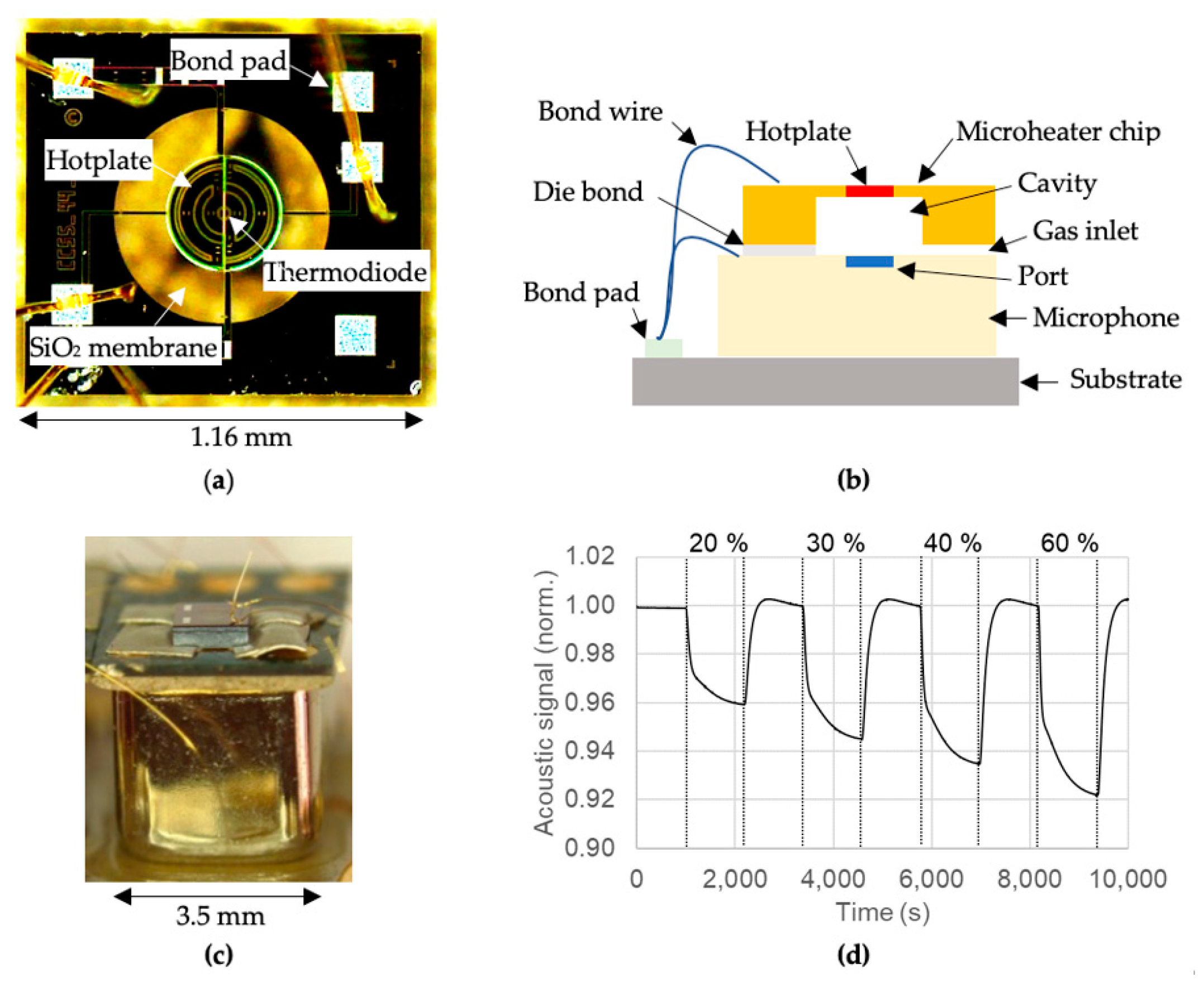Miniaturized Thermal Acoustic Gas Sensor Based on a CMOS Microhotplate and MEMS Microphone †
Abstract
:1. Introduction
2. Fabrication and Results
Author Contributions
Funding
Conflicts of Interest
References
- Kontomichos, F.; Koutsioubas, A.; Mourjopoulos, J.; Spiliopoulos, N.; Vradis, A.; Vassilantonopoulos, S. Testing and simulation of a thermoacoustic transducer prototype. In 126th Audio Engineering Society Convention; Audio Engineering Society: New York, NY, USA, 2009. [Google Scholar]
- Timmer, M.A.G.; Blok, K.; Meer, T.H. Review on the conversion of thermoacoustic power into electricity. J. Acoust. Soc. Am. 2018, 143, 841–857. [Google Scholar] [CrossRef]
- Ali, S.Z.; Udrea, F.; Milne, W.I.; Gardner, J.W. Tungsten-based SOI microhotplates for smart gas sensors. J. Microelectromech. Syst. 2008, 17, 1408–1417. [Google Scholar] [CrossRef]

Publisher’s Note: MDPI stays neutral with regard to jurisdictional claims in published maps and institutional affiliations. |
© 2020 by the authors. Licensee MDPI, Basel, Switzerland. This article is an open access article distributed under the terms and conditions of the Creative Commons Attribution (CC BY) license (https://creativecommons.org/licenses/by/4.0/).
Share and Cite
Hopper, R.; Popa, D.; Tsoutsouras, V.; Udrea, F.; Stanley-Marbell, P. Miniaturized Thermal Acoustic Gas Sensor Based on a CMOS Microhotplate and MEMS Microphone. Proceedings 2020, 56, 3. https://doi.org/10.3390/proceedings2020056003
Hopper R, Popa D, Tsoutsouras V, Udrea F, Stanley-Marbell P. Miniaturized Thermal Acoustic Gas Sensor Based on a CMOS Microhotplate and MEMS Microphone. Proceedings. 2020; 56(1):3. https://doi.org/10.3390/proceedings2020056003
Chicago/Turabian StyleHopper, Richard, Daniel Popa, Vasileios Tsoutsouras, Florin Udrea, and Phillip Stanley-Marbell. 2020. "Miniaturized Thermal Acoustic Gas Sensor Based on a CMOS Microhotplate and MEMS Microphone" Proceedings 56, no. 1: 3. https://doi.org/10.3390/proceedings2020056003



